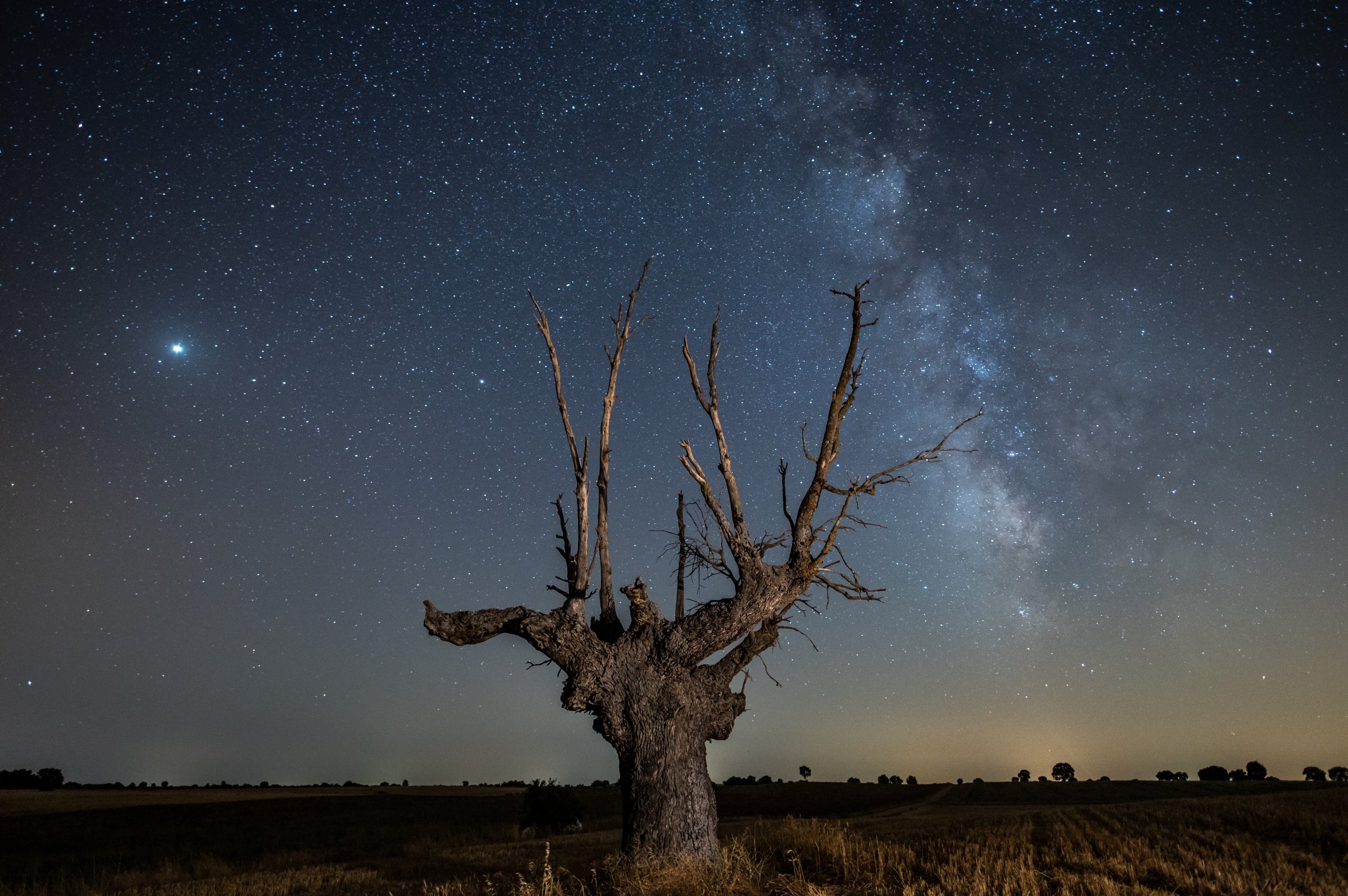
History does not record who the weeping woman was who joined the giant crowd at the Griffith Observatory in Los Angeles on Feb. 4, 1962. But she was inconsolable.
“I know it’s silly to carry on this way,” she said with a hitching breath to a reporter from the Griffith Observer magazine. “But I can’t help myself.” The cause of her profound distress: On that day, the Sun, the moon, and all five non-Earthly planets from Mercury to Saturn were arranged in a cosmic conga line within a tiny 17-degree patch of the sky. The alignment foretold terrible things, said many: earthquakes, floods, a devastating rending of the Earth itself from the gravitational pull of so many other bodies at such close range.
The day, for the record, ended peacefully, as all such things work out when the planets align. That’s worth remembering this week, as five planets—Venus, Mars, Jupiter, Mercury, and Uranus—form a similar alignment near the moon, in an arc that will stretch from close to the horizon, up to the top of the bowl of the night sky.
The alignment is, of course, an illusion. The planets remain separated by tens and hundreds of millions of miles. Mercury and Uranus, which will appear to be keeping close company this week, for instance, are actually 1.75 billion miles apart. But when numerous planets happen to gather on one side of the sun, they take on a pearl necklace appearance that gives them the look of having fallen into close ranks.
One of the rare times multiple planets did align was back in the 1970s and 1980s, when the four gas giants—Jupiter, Saturn, Uranus, and Neptune—formed tidy and temporary ranks in deep space. That allowed the Voyager 2 spacecraft to barnstorm all four of them in what was called the Grand Tour of the outer solar system.
Modern astronomy notwithstanding, you don’t have to go back to the ancients to find people on whom planetary alignments have had much the same distressing effect they had on the woman at the Griffith Observatory, 61 years ago. As The Scotsman reports, astrologers are predicting that the current alignment could lead to impulsive behavior and “fiery disagreements” with loved ones this week. Much more dire predictions were at large in 1919, when a similar arrangement of the planets led to widespread rumors that the phenomenon would lead to a rash of sunspots which would cause worldwide destruction at a scientifically sounding precise moment: Dec. 17 at 8:31 AM. (The rumors also had it that existing sunspots, along with the somehow pernicious influence of Jupiter, were responsible for the 1918 flu pandemic.)
On May 5, 2000, the moon, Mercury, Venus, Mars, Jupiter, and Saturn converged in a patch of sky less than 25 degrees across, leading to still more tales that the gravitational muscle of the seemingly clustered bodies would potentially tear the Earth in two. Astrological forecasts also saw the alignment as a sign of the coming of the End Times.
Perhaps the most celebrated recent alignment took place on Dec. 24, 2022, when all eight planets lined up in a horizon-to-horizon arc. This yet again, gave rise to tales of gravitational destruction. But NASA has a ready answer to that. The gravitational pull of the larger planets is indeed considerable. Jupiter’s gravity, for example, is more than 2.5 times that of Earth. But gravity isn’t the only part of the equation. Distance plays a role too. The farther away an object is, the less we feel its gravitational influence (a good thing, considering that a supermassive black hole sits at the center of our galaxy and yet its gravity does us no harm.)
On a scale on which the influence of the Sun’s gravity on Earth—its so-called tidal force—is 1.0, the moon (much smaller but much closer) weighs in at 2.1. Venus is 0.000113; massive Jupiter is 0.0000131; as for giant but distant Neptune: 0.000000002. As NASA says: “If all of the planets were to align perfectly with each other…their gravity would raise the ocean tides by just one twenty-fifth of one millimeter.” As environmental scientists would point out, we should worry a whole lot more about the effect of climate change on our tides and sea level than about the impact of extraterrestrial gravity.
The takeaway: This week’s sky show is just a sky show, one of those little gifts—like solar and lunar eclipses or the passing of a comet—that the heavens occasionally give us. Enjoy the spectacle—and if you miss this one, just be patient. On June 27, there will be another alignment, when Mercury, Uranus, Jupiter, Neptune and Saturn will cluster within a 95-degree arc of sky.
More Must-Reads from TIME
- Inside Elon Musk’s War on Washington
- Introducing the 2025 Closers
- Colman Domingo Leads With Radical Love
- Why, Exactly, Is Alcohol So Bad for You?
- The Motivational Trick That Makes You Exercise Harder
- 11 New Books to Read in February
- How to Get Better at Doing Things Alone
- Column: Trump’s Trans Military Ban Betrays Our Troops
Write to Jeffrey Kluger at jeffrey.kluger@time.com